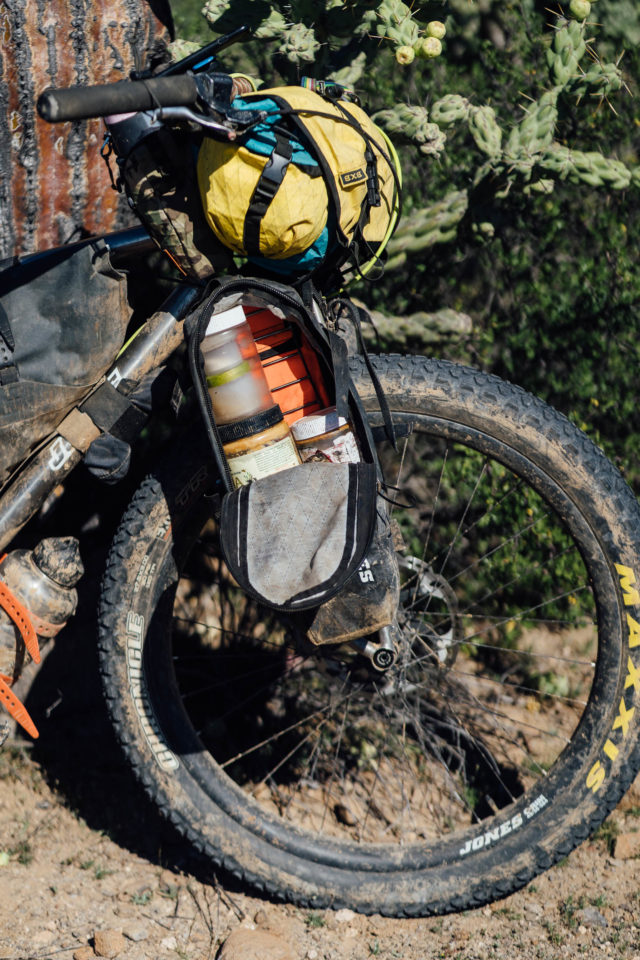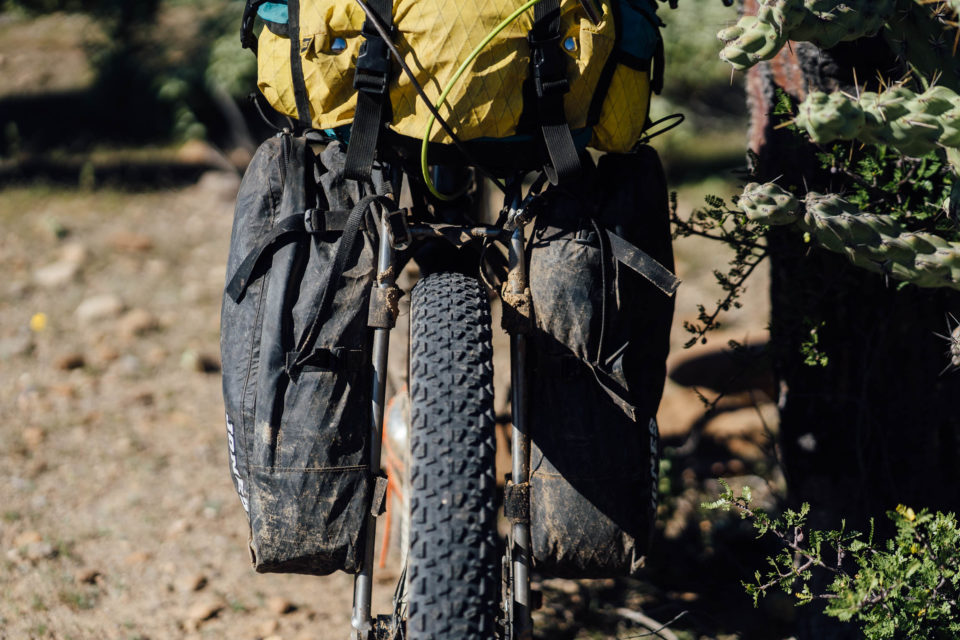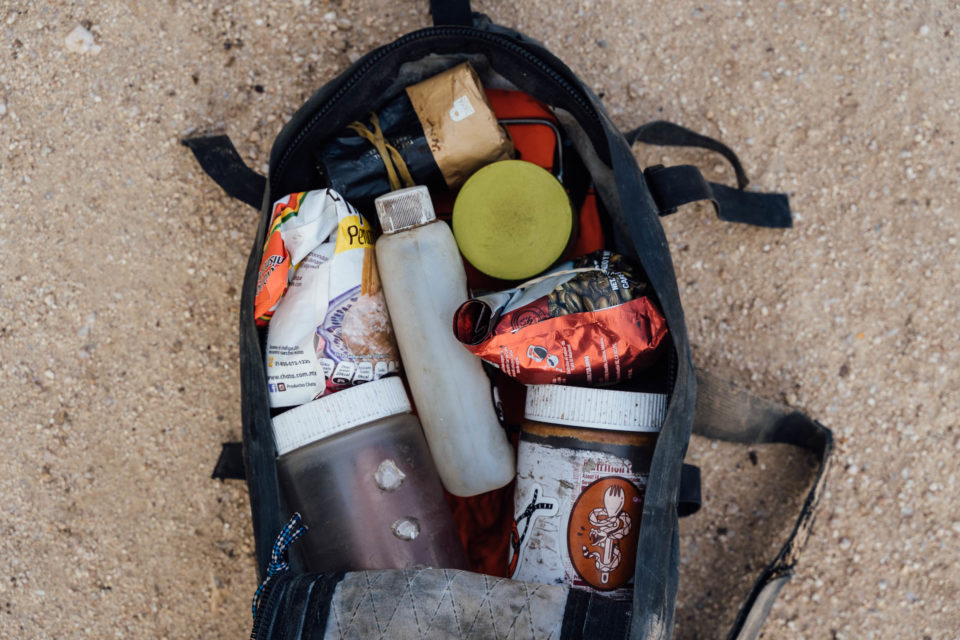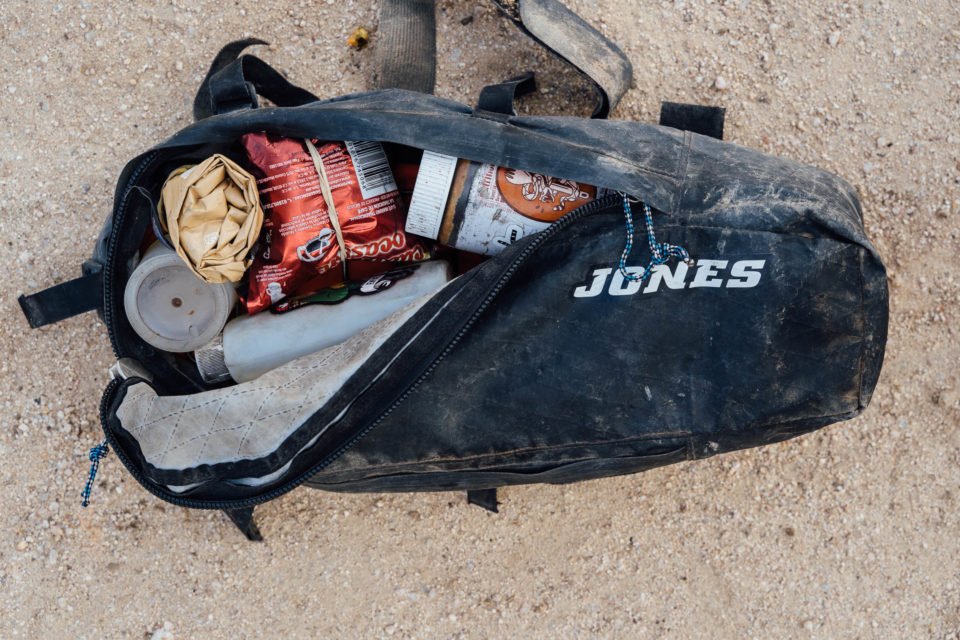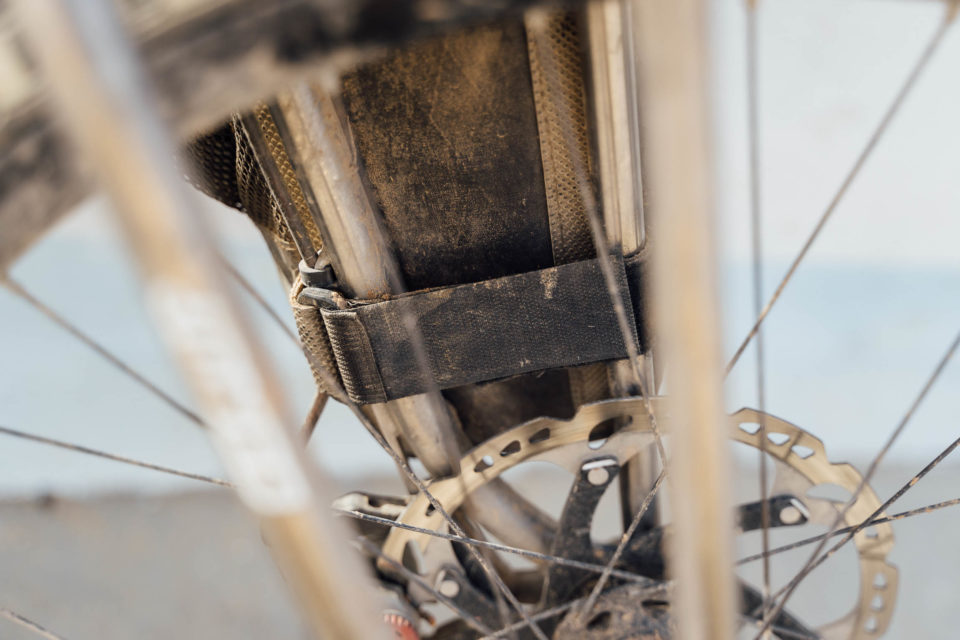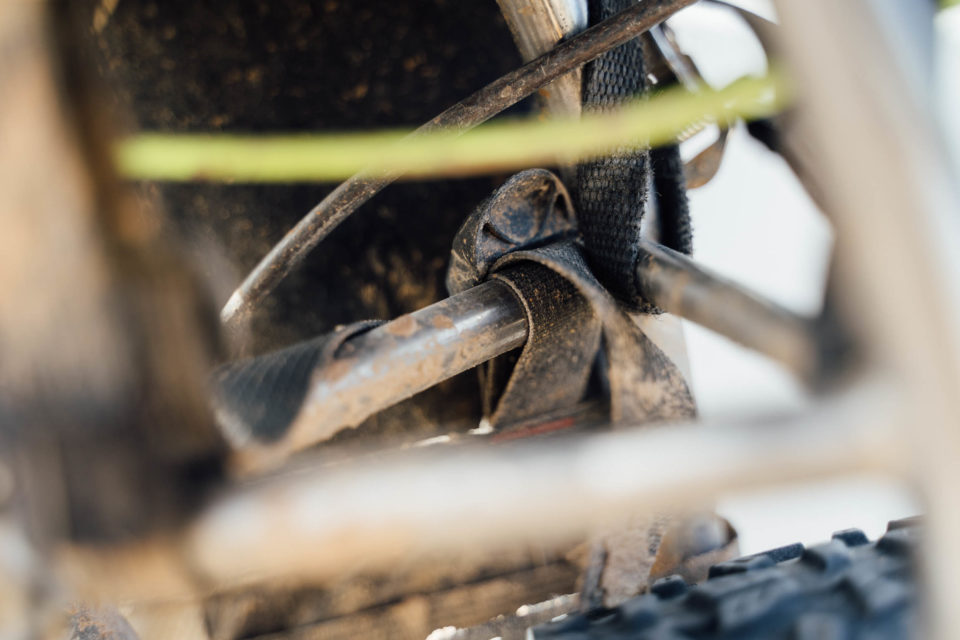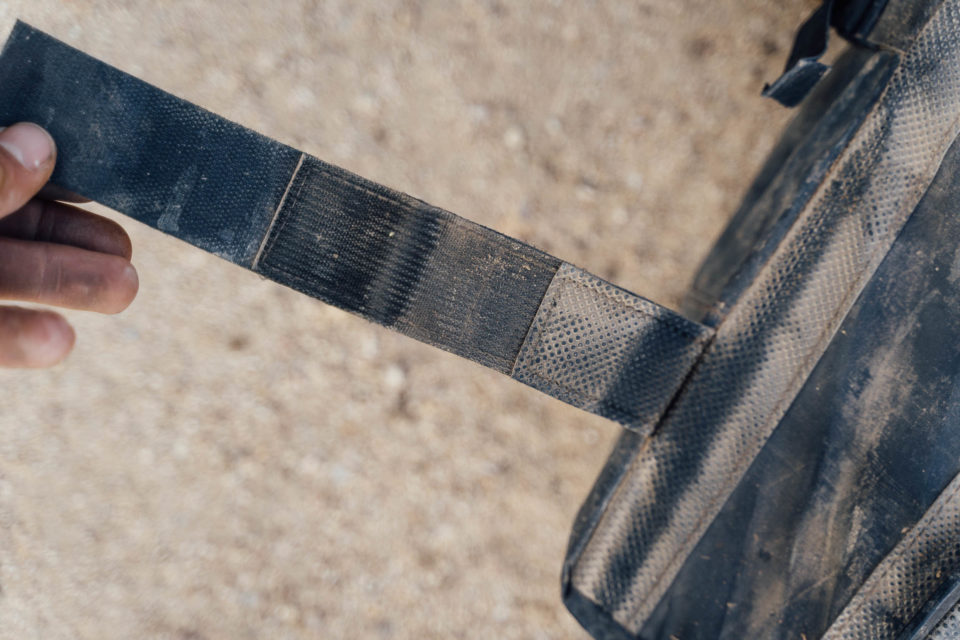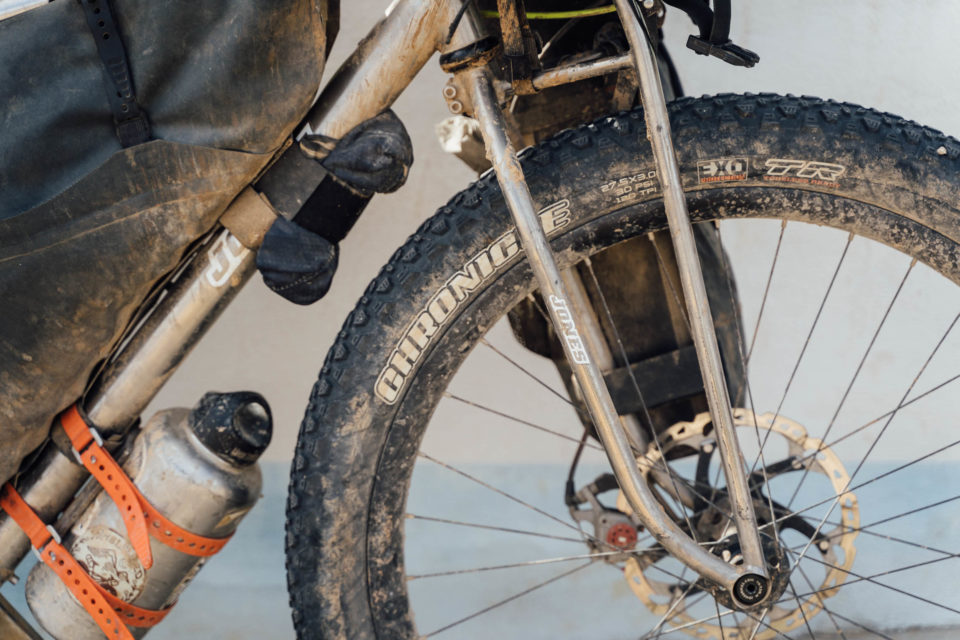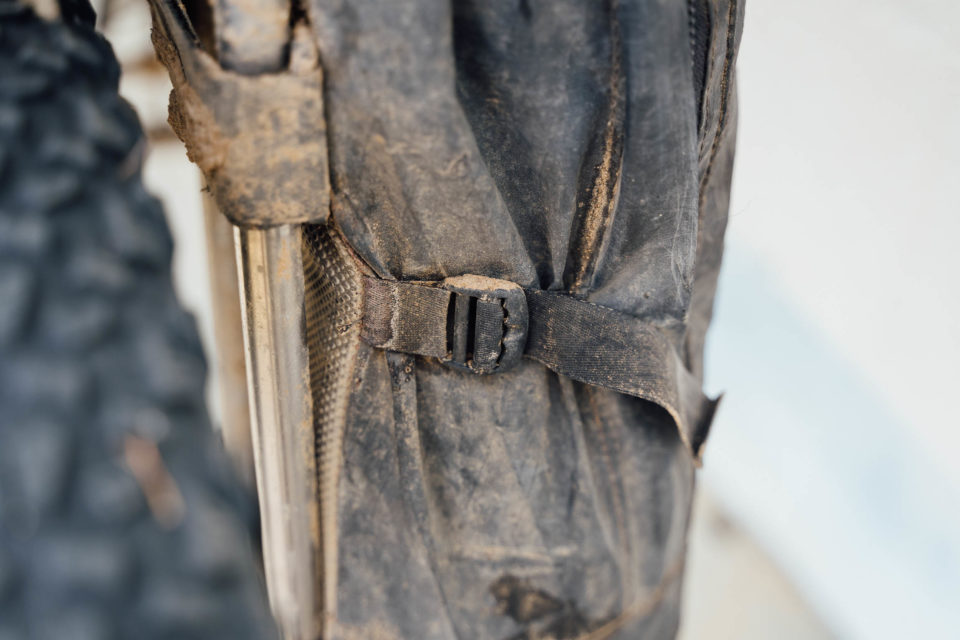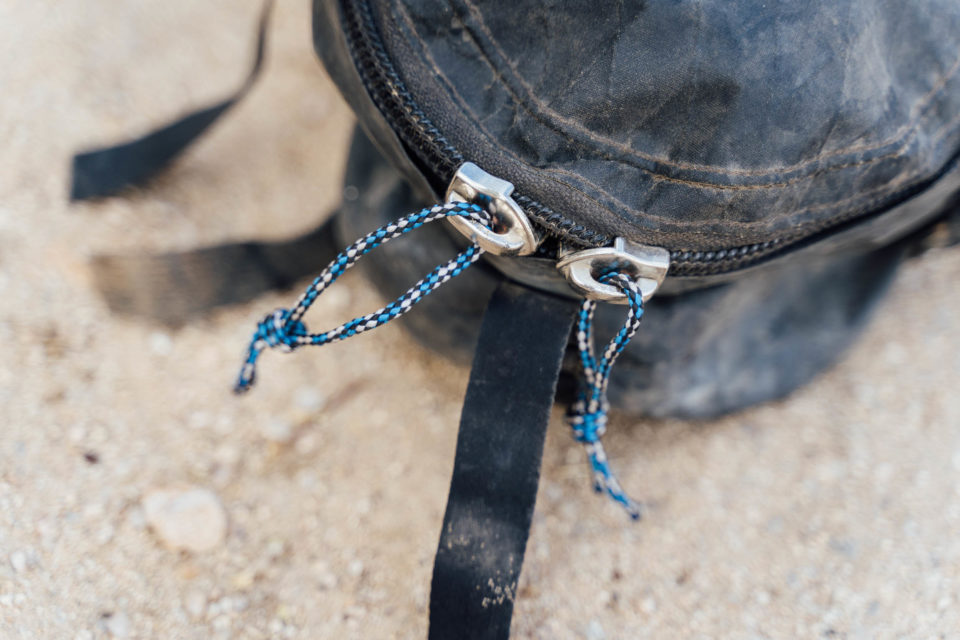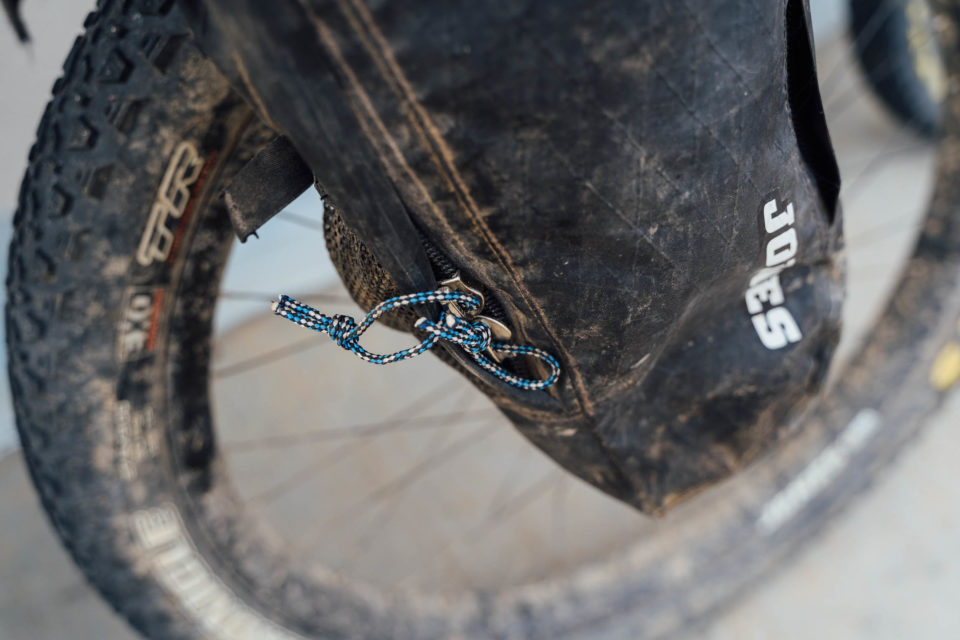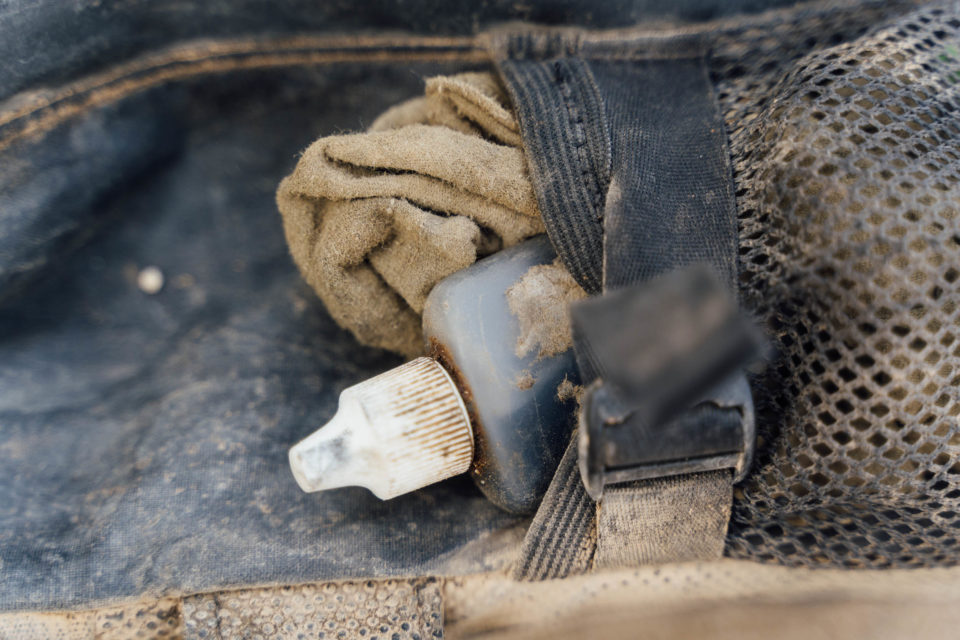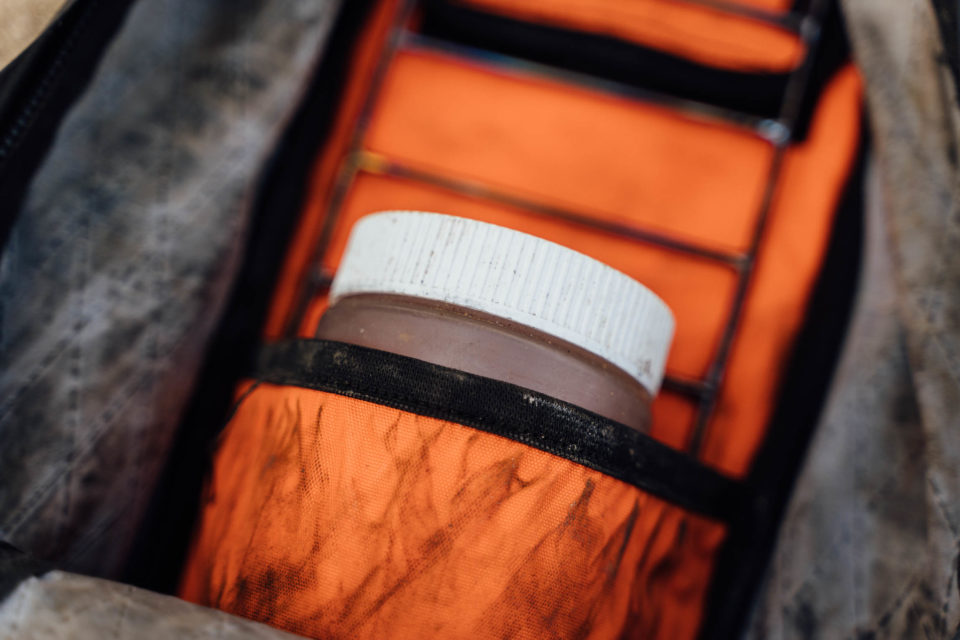Review: Jones Truss Fork Pack (by Revelate Designs)
As bikepackers, we often seek ways of keeping our setups light, minimal, and rattle-free, whilst still increasing capacity when we need to. For those running a truss fork instead of suspension or a more conventional unicrown, Jones’ Truss Fork Pack is a clever way of making it all work, and one that will likely suit smaller riders too. Cass spent a few months testing a pair for this review…
PUBLISHED Mar 13, 2020
First, a caveat to this post: Jones’ Truss Fork Packs, as designed by Jeff Jones (but made by Revelate Designs), are specific to a Jones bike-which at first glance might be hard to tell, given that their rather enormous size hides the elegant lines of its truss fork.
But they offer such a welcome boost in capacity—for both those with needs that extend beyond a minimal bikepacking setup and for smaller riders—that I think they’re well worth sharing, even as a concept. Certainly, I’ve had plenty of questions about them whilst riding the Baja Divide.
We all aspire to a sleek and clutter-free bikepacking setup that keeps our bikes light, agile, and stable when we’re riding them on trails and dirt roads. Sometimes, however, we need extra space, be it for longer trips with less frequent options to resupply or desert riding where extra water is required. Smaller riders will always face their own packing challenges, too. Not only are their framebags more compact, but the tyre-to-seat spacing will be significantly reduced with plus tyres, which reduces the size of a seatpack. Fitting a minimal rack and a set of micro panniers is one option. And it’s not a bad solution at all, being far lighter and more pleasurable to ride with off road than the heavyweight rack and pannier setup of old, as well as being slimmer in profile when hike-a-bikes are required. But if your fork effectively has a rack worked in as part of its design, why not use it to lash on extra gear?
Jones’ Truss Fork Pack makes the most use of the bike’s iconic truss fork. At 750g a pair, they’re not as light as fitting a cargo cage and roll-top bag (likely in the region of 300-400g, all in – see our Gear Index on the subject), but they’re considerably more spacious and easy to access. And in the case of a Jones, if you do decide to invest in a Ti truss fork (1025g) over the steel model (1345g), you’ll just about make up the difference.
The bag straps very securely to the fork in two places with velcro, with an additional loop that runs around the top of the truss to prevent it from slipping down. It’s somewhat fiddly to instal tightly, so not something you’ll want to be doing at the end of each day—having the wheel removed helps. Capacity-wise, they are massive. I use one side to pack my tarp, groundsheet, and waterproofs (gear that I stow last or pull out often), and food and my cooking kit on the other, especially anything that I’m snacking on during the day. In the case of the Baja Divide, where water hauling is the main challenge, there’s also room to slide in a couple of tall, thin bladders, which gives them a good deal of versatility in a relatively.
The position of the bags in relation to the steering axis means they create a relatively small amount of impact on your bike’s handling, though of course this does depend on how heavily you load them. With the gear I tend to carry, I soon adjust to them and have no qualms riding techy trails. Their slim profile and location mean I haven’t had any issues with them catching on errant rocks and flora either, as would be the case with a traditional set of low rider panniers.
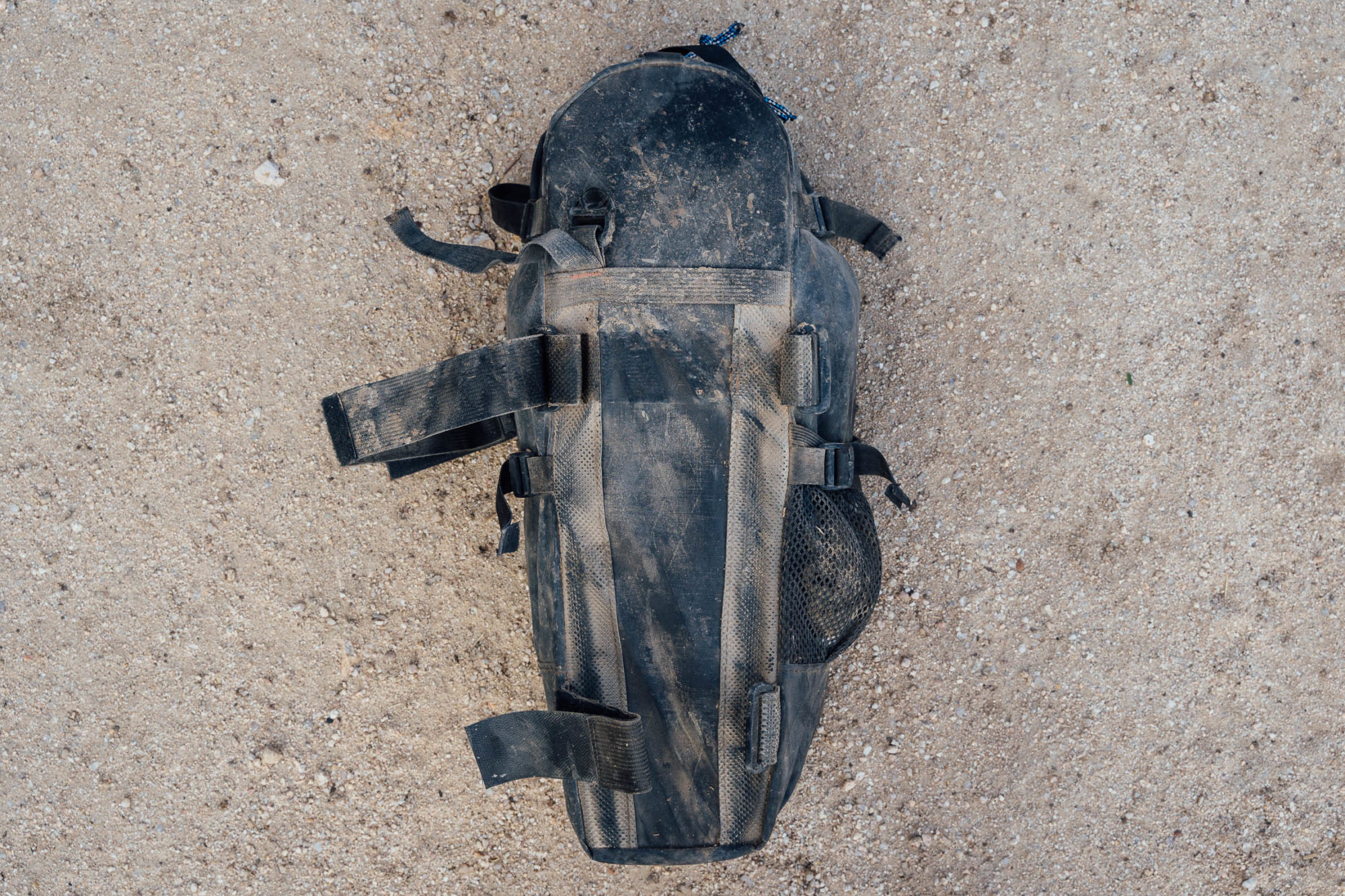
In terms of materials, the bags are predominantly made from VX-21 polyurethane-coated X-Pac, with a bright orange liner. The shape is tapered, with especially long zips that allow really easy access—almost like a suitcase—that makes packing them a breeze. I personally take great satisfaction in packing mine like a larder! There’s an internal sleeve, behind which hides a supporting stiffener. And externally, there’s a small mesh pouch that’s handy for trash, a multi-tool, or some oil and a rag. It’s a shame that it’s not quite big enough to run a water bottle. Unlike a clip-on pannier, there’s no rattle at all and they can be compressed down too, which helps keep them slim in profile and prevents the contents from rolling around over rocky terrain, of which there’s plenty in Baja.
From a day-to-day perspective, I absolutely love using these bags. Whilst I’m riding this bike and fork combination (expect a review soon), they’ve helped change my packing system for the better. But I do have a few gripes that are worth mentioning. When I first tried them, I noticed immediately that the burly, size 10 YKK zipper pulls clatter against each other while riding, so I snipped mine off and replaced them with cord. And although these big zippers are extremely reliable, they do have a tendency to snag in the zipper guard unless you remember to pull the guard back first, which is annoying. The straps can flap in the wind too, unless you tuck them in, and the bag itself adds to the front surface area of your bike… not ideal in windy conditions, perhaps, though they do serve to keep your feet warm in the winter!
I’ve mentioned that the Truss Fork Pack isn’t as light as roll-top bags mounted to a cargo cage, nor is it waterproof. But then again, they’re massive and the build quality is certainly there – despite laying down my bike on the ground on numerous occasions, there are no signs of abrasion. I expect a roll-top design would be lighter and potentially more water-resistant, but ultimately less practical and hardwearing. Bear in mind too that the shape of a truss fork pushes handlebar bags further outboard. It doesn’t limit the size of the bag as much as alter its position; I find a small BXB Goldback or Tribulus Endover works well in terms of accessibility and makes a great setup for trail bikepacking, as would a more conventional handlebar roll to maximise capacity.

Lastly, compatibility. Eyeballing the bags, I don’t believe they’d make a good match for Oddity’s Squidfork, as featured in our recent Why Cycles Wayward V2 write up. But the design should certainly offer inspiration if you want to sew your own, or have a custom pack created by a favourite maker.
- Weight: 750 grams (pair)
- Size: 17.5 x 4-6.5 x 4-5.5″ (45 x 10-17 x 10-14cm)
- Place of Manufacture: USA
- Price: $250 USD/pair
- Manufacturer’s Details: Jones Bikes
Wrap Up
Effectively, the Jones Truss Fork Pack is the bikepacker’s take on a low-rider front pannier. Weight is well placed to offer a stable ride off-road, there’s no rattle to worry about on trails (and the slim profile doesn’t get in the way either), and I can load in my gear in a very convenient way with quick access too. I’d love to see a lighter version, perhaps with different zips or a roll-top design. But as it is, the bags are surprisingly roomy and crammed with features, and are certainly built to last.
Yes, these bags are specific to running a truss fork, and a Jones at that. But they’ve really added versatility and range to my setup with a relatively low weight penalty, at least compared to adding in a rack and micro panniers. For smaller riders with limited space between the rear tyre and their seatpack, I think they have the possibility to be a game-changer.
Please keep the conversation civil, constructive, and inclusive, or your comment will be removed.
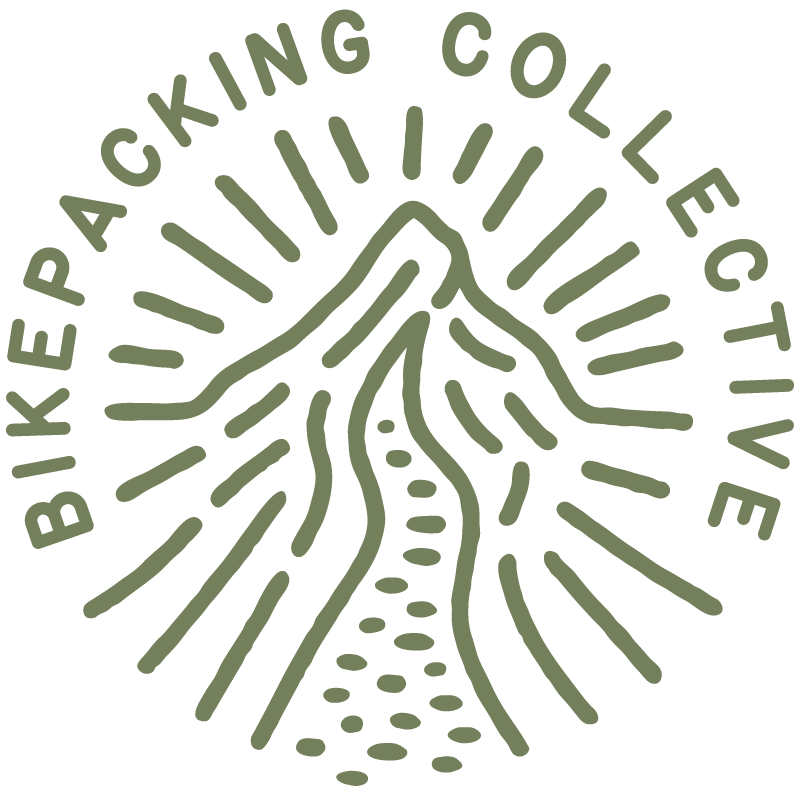
We're independent
and member-supported.
Join the Bikepacking Collective to make our work possible:










